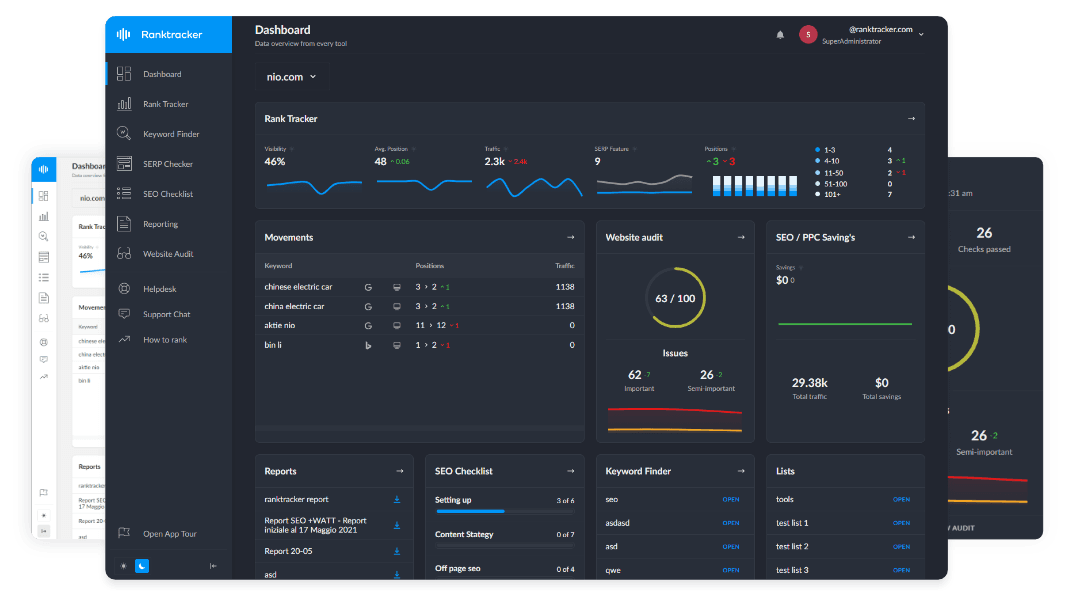Intro
If your website is not appearing in search results, it may be due to indexing or crawling issues. Search engines need to crawl and index your site properly to rank your pages. Here’s how to identify and fix these problems.
1. Diagnose Indexing & Crawling Issues
Before fixing the issue, identify what’s causing it.
Check Google Search Console
- Navigate to the Indexing > Pages report to see excluded pages.
- Use the URL Inspection Tool to check if a page is indexed.
- Look for errors like Crawled - currently not indexed or Discovered - not currently indexed.
Run a Site Crawl
- Use tools like Ranktracker’s Web Audit, Screaming Frog, or Sitebulb to analyze your site.
- Identify broken links, redirect chains, and blocked pages.
2. Ensure Your Site is Crawlable
Search engines must be able to access and crawl your pages.
Fix Robots.txt Issues
- Check
yourdomain.com/robots.txtto ensure no important pages are blocked. - Remove unnecessary
Disallow:directives if needed.
Submit an XML Sitemap
- Generate an XML sitemap using Ranktracker’s Web Audit or a CMS plugin.
- Submit it to Google Search Console under Sitemaps.
3. Address Noindex & Canonical Tag Errors
Certain directives can prevent pages from being indexed.
Check for Noindex Tags
- Look for
<meta name="robots" content="noindex">in your page source. - Remove it if the page should be indexed.
Review Canonical Tags
- Ensure canonical tags point to the correct version of your page.
- Avoid self-referencing canonical issues.
4. Improve Site Structure & Internal Linking
Poor internal linking can lead to orphan pages that don’t get indexed.
Best Practices:
- Link important pages from your homepage or navigation.
- Use keyword-rich anchor text for internal links.
- Avoid deep URL structures that make pages hard to find.
5. Fix Slow Loading Pages & Server Errors
Slow sites and server issues can prevent search engines from crawling effectively.
How to Improve Performance:
- Optimize images and enable compression.
- Minify CSS, JavaScript, and HTML.
- Use a Content Delivery Network (CDN) to improve load speeds.
Check for 5XX Server Errors
- Ensure your hosting server is stable and not causing frequent downtime.
- Fix 500, 503, or other server errors using your web host’s support.
6. Request Indexing in Google Search Console
If a page is not indexed, request manual indexing.
Steps:
- Open Google Search Console.
- Navigate to the URL Inspection Tool.
- Enter the page URL and click Request Indexing.
Final Thoughts
Indexing and crawling issues can severely impact your website’s visibility. By diagnosing problems, optimizing crawlability, and ensuring fast loading speeds, you can help search engines properly index your site and improve rankings.

